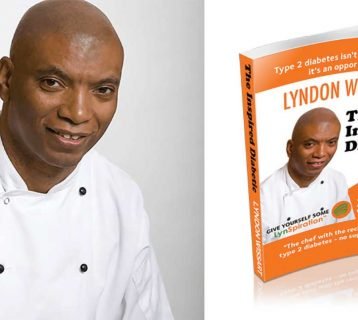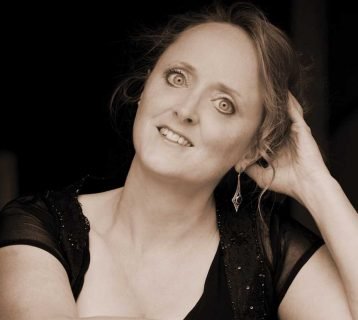Practising qi gong promotes positivity, wellness and a balance in life, says Mina Wolton, who offers classes in the ancient mind-body-spirit system at Wanstead House My name is Mina and I have lived in Wanstead for nearly 25 years. I am a qi gong practitioner and have recently started teaching classes at Wanstead House Community centre. I have always been interested in health and wellbeing and played sports all my life. However, ill health in my thirties led me to exploring complementary therapies, particularly qi gong. What they all had in common was working with a life force and being able to tap into that energy to energise, heal and create harmony within. Qi gong, which was documented in China over 2,000 years ago, has become popular throughout the world for its many health-giving benefits. Qi (pronounced ‘chi’) is the Chinese word for life force or energy (also known as ‘ki’ or ‘prana’). Nature is infused with qi, which is why when we are by the sea, near mountains, in forests, gardens or just looking at clouds floating in the sky, we experience qi at a deep level and feel the restorative power of that energy field in nature. Gong...
Features
As part of Black History Month events taking place locally in October, chef Lyndon Wissart will be explaining how he managed to cure his Type 2 diabetes in 105 days… without medication My name is Lyndon Wissart and I am from London. I have recently undertaken a journey, which has involved tackling and overcoming struggles with my health. In 2015 I was diagnosed with Type 2 diabetes, with indications that I was in a danger zone with the symptoms involved. Since then I have managed to cure myself of diabetes without medication. I have also written a book called The Inspired Diabetic, which details my experience in the hope I can help others with the same condition. Though my parents are of Jamaican heritage, I am originally from London, and have been trained as a professional chef with 30 years of experience under my apron in restaurants and hotels around the capital. According to current statistics, people from a BAME background have a greater chance of developing Type 2 diabetes (people of African-Caribbean decent are three times more likely). It has become an increasingly undeniable truth that the diabetes epidemic affects people globally and the fact that these unfortunate circumstances can...
David Rosenberg is a lifelong campaigner against fascism and racism, and at this month’s East London Humanists meeting, he will be giving his perspective on the scourge of anti-Semitism and inviting discussion. After the horrors of the Holocaust were exposed to the world, most people thought it inconceivable that anti-Semitism could surface again in any serious form, but anti-Semitism has proven to be a light sleeper in Britain. And while abuse and attacks targeting Muslims and refugees are more commonplace, the number of anti-Semitic incidents in Britain in recent years has begun to rise. It has rarely been absent from the headlines, not just because of the reported incidents, but because it has become a political football. I grew up as a Jew in inner London, then later in Ilford. From around 16 years old, I became an anti-racist activist. I instinctively associated British anti-Semitism with the political right and far right. In 2011 I published a book called Battle for the East End, which focused on Oswald Mosley’s British Union of Fascists, a fundamentally anti-Semitic movement that built 500 branches around the country in the 1930s, and won adherents among all classes to its poisonous ideology. In the more...
In the fifth of a series of articles looking at the developing plans for restoring Wanstead Park, Richard Arnopp from the Friends of Wanstead Parklands brings us up to date on hopes to resolve the problems with the park’s lakes The lakes in Wanstead Park are the most visible remaining features of its past as one of this country’s great landscaped gardens. All completely artificial, they are now nearly 300 years old, and for most of their history have suffered from fluctuating water levels. As the Friends have described in previous articles, this has been due to several factors: The failure of systems designed to supply water to the lakes from outside the park. The loss of much of the natural catchment area to development since 1900. The introduction of modern drainage systems and other services around the park, which has lowered the water table and created leak paths. The loss of the River Roding as a source for the Ornamental Water. The unfavourable geology on which much of the lake system sits. The lack of effective lining, or its deterioration beyond repair, in two of the most vulnerable lakes, compounded – in one case - by wartime damage. Wanstead Park...
In the 18th of a series of articles, David Bird discusses the work of Redbridge Music Society and introduces us to Spanish saxophonist Manu Brazo, who will be performing at Wanstead Library this month. The current aims of Redbridge Music Society are to promote and support talented young musicians in the early years of their careers and to provide a diverse range of musical genres to the Redbridge public. This month, outstanding young saxophonist Manu Brazo, together with award-winning piano accompanist Bryan Evans MBE, will perform music by Vaughan Williams, Verdi (Traviata Fantasy), de Falla, Gershwin and others. Twenty-six-year-old Manu Brazo was born in Utrera (Seville). After completing his undergraduate studies under Juan Jimenez at the Manuel Castillo Conservatory of Music in Seville, he continued his studies at London’s Royal College of Music (RCM) for a Masters in Performance degree. He made his concerto debut in the UK with the Guildford Symphony Orchestra in 2016, playing the Glazunov Saxophone Concerto, and since then has performed with a number of orchestras, including the London City Orchestra. Manu has won many awards and prizes, including the 2016 Manuel Castillo Conservatory Concerto Competition. He was invited to join the London Sinfonietta Academy and...
Join prizewinning author Jean Fullerton at Wanstead Library this month as she discusses her latest novel A Ration Book Childhood, which explores a dangerous secret, set in the darkest days of the Blitz. Hello everyone, and for those of you who don’t know me or my books, I’m Jean Fullerton, an award-winning, bestselling author of 15 historical novels. I’m also a native East Ender, born and bred in Stepney where my family have lived since the 1830s. Unsurprisingly, all my novels are set in the overcrowded and boisterous streets around the London Docks. I believe my background gives me a unique home-grown perspective into the history and culture of the old riverside communities. I first fell in love with history at school when I read Anya Seton’s book Katherine. Since then I have read everything I can about English history but I am particularly fascinated by the 18th and 19th centuries and my books are set in this period. I just love my native city, and the East End in particular, which is why I write stories to bring that vibrant area of London alive. My first series introducing the Nolan family spanned the 1830s and 1840s, after which I jumped...
One of our aims has been to make art more accessible. It’s a form of communication. If we’ve helped more local people enjoy art, that’s an important achievement, says Donna Mizzi, Art Trail Wanstead founder. “For some reason, there’s art everywhere on the High Street!” “Gosh, there must be a helluva lot of artists living in Wanstead.” “What’s that cow doing in Majestic Wine Warehouse?” These were just a few of the comments overheard during September’s Art Trail Wanstead. This trail has been the biggest and best in its 10 years, according to many visitors and artists. Almost 80 venues participated in the free 16-day event organised by Art Group Wanstead volunteers. Some small shops showed a few samples while larger businesses accommodated work by several artists. Florist Lillies of Wanstead even gave over its whole front window to flower art by delighted Leila Skye, while trail supporter The Stow Brothers used its window and walls to showcase the event. About 150 amateur and professional artists took part, and at least the same number of school children. In addition, 142 art postcards went on display, most created by local residents. Children from Wanstead Church School and Aldersbrook Primary made hundreds...
Fabula Festival – Redbridge Libraries’ biggest cultural event of the year – is back this autumn and promises to delight residents with a jam-packed programme. Anita Luby reports Fabula Festival (2 to 13 October) is a celebration of the arts and libraries and their power to transform lives. It’s delivered through a programme of performances, children’s events, author talks, films, writing programmes, workshops and arts projects. It gives residents the opportunity to participate in a range of new and exciting activities delivered by a range of local and national organisations, showcasing the very best in literature, music, drama, dance, film, art and technology. Festival highlights include an evening with author Lucinda Dickens Hawksley at Wanstead Library (10 October, 7.30pm). Everyone knows Charles Dickens’ novels, but did you know he was also a keen actor, mesmerist and conjuror? Lucinda – who is also Dickens’ great-great-great-granddaughter – will talk about the man behind the novels: the journalist, social campaigner, dog lover, travel writer, and a man who was so influential in his own time that when he died the whole country went into mourning. She will also look at the changes he helped bring about in society, which still have resonance today....
In the second of a series of articles by members of the Woodford and Wanstead Photographic Society, Jim Williams tells the story behind this image taken on his way home from work This picture may be nothing special to most photographers, but to me it was a milestone breakthrough, realising I had recognised the possibility of getting this shot. I have been a regular member of Woodford and Wanstead Photographic Society for just under three years but still consider myself a novice when I compare myself to other members I admire. Some people just have the knack of finding the right angle to make an average image great. I often wonder how they see what I don’t and whether you can teach someone creativity or if it’s something you just have or you don’t. I must say, since joining Woodford and Wanstead Photographic Society, I have started to continually look at my surroundings to see if there is a potential photograph within my sights. I now look skyward as much as down and left or right. Leaving my office in Fitzrovia at 4.30pm daily, and walking the same route to Tottenham Court Road Tube station, I noticed this facade in Percy...
In the third of a series of articles looking at the work of Age UK Redbridge, Barking & Havering, Janet West explains the importance of Older People’s Week and looks at what will be happening in Wanstead The United Nations General Assembly passed a resolution on 14 December 1990 declaring 1 October as an International Day of Older People. The day is to acknowledge and appreciate the enormous contributions and achievements that older people make to the functioning of society and the economy. According to the United Nations, almost 700 million people are now over the age of 60. By 2050, two billion people, over 20% of the world’s population, will be 60 or older. The increase in the number of older people will be the greatest and most rapid in the developing world, with Asia as the region with the largest number of older persons, and Africa facing the largest proportionate growth. Each year, the International Day of Older People has a different theme. Last year’s theme was ‘Celebrating Older Human Rights Champions’ and for 2019 the theme will be ‘The Journey to Age Equality’. Age UK Redbridge, Barking & Havering have been working alongside Redbridge Council and other local organisations...
Marian Temple from the Wanstead Community Gardeners takes a look at the Wanstead Place Clinic garden, a site that epitomises the group’s ethos of collective effort, but is also home to some mystery goings-on Our latest garden has really taken on a life of its own. Planted only in April in order to catch the spring showers, which didn’t come, it has been lovingly watered by the wonderful Carmel who works in the British Heart Foundation shop. She has the enviable ability of involving the whole world in the watering. Thus, the neighbours, the minister one side and the man in the tall house the other side, have been filling watering cans and barrels. Helen and Eileen who work at the clinic have been doing their bit, as well as a neighbour in Church Path. This really has turned out to be a community garden with us, the Wanstead Community Gardeners, setting it up and the locals taking over from there. This is exactly as we would like it to be. It makes sense. The garden flourished, and in seemingly no time was awash with colour. This is the only one of our patches which has the luxury of being...
On 3 October, Wanstead residents will get the chance to quiz London City Airport representatives about their expansion proposals. John Stewart of campaign group HACAN East reports. London City Airport has extended the consultation on its expansion proposals in its draft Master Plan to 18 October. The airport wants to almost double flight numbers from today’s levels, end the 24-hour weekend break and bring in more planes in the early morning and late evening. The proposals have proved highly controversial. The Mayor of Newham called the draft Master Plan “fundamentally flawed”. Other local authorities have come out against the proposals and local residents from many parts of London have been sending in objections. Climate change activists have also raised big concerns. London City Airport does seem to have miscalculated just how much opposition its proposals would generate. When the consultation ends, it will look at the responses and publish a final Master Plan towards the end of this year. If it does decide to take any of the proposals forward, the airport will need to draw up a detailed planning application to Newham Council, the planning authority for the airport. It will be required to consult on its proposals before...













